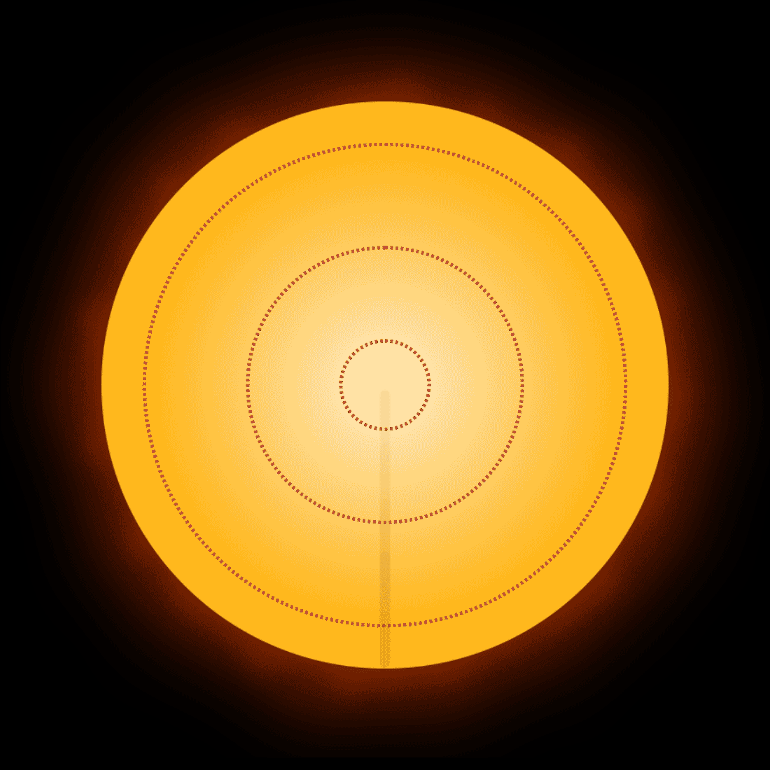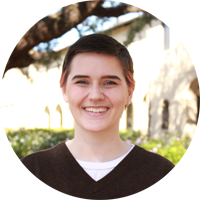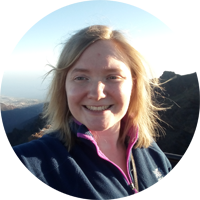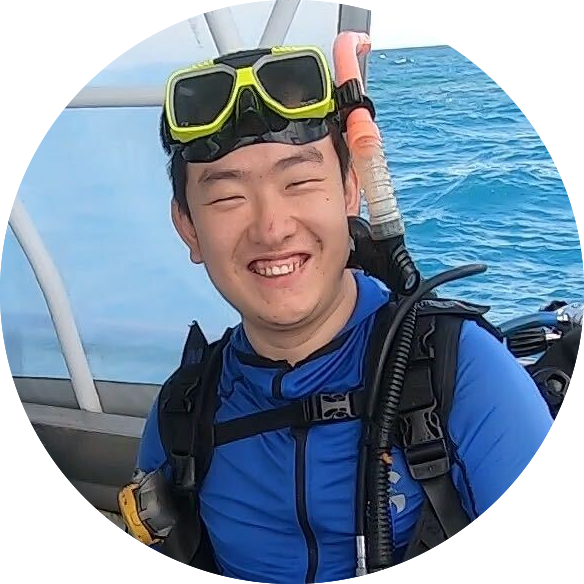Asteroseismology
Asteroseismology involves using the oscillation frequencies of a star to measure its internal properties.
A star is a gaseous sphere and will oscillate in many different modes when suitably excited. The frequencies of these oscillations depend on the sound speed inside the star, which in turn depends on density, temperature, gas motion and other properties of the stellar interior.
This analysis, called asteroseismology, yields information such as composition, age, mixing and internal rotation that cannot be obtained in any other way and is completely analogous to the seismological study of the interior of the Earth.
The SIfA asteroseismology group play a central role in the interpretation of oscillation data for different types of pulsating stars in different evolutionary stages, such as the rapidly oscillating Ap stars, δ Scuti stars, and the solar-like oscillators.

Academic staff

Tim Bedding is a professor of astrophysics whose research focuses on asteroseismology. He is interested in studying oscillations in many different types of stars, from Sun-like stars to red giants, using observations from NASA’s Kepler and TESS missions.

Courtney Crawford studies pulsations of red giants using both models and observations. She also works with hydrogen-deficient giants, especially those formed from double white dwarf mergers such as the R Coronae Borealis variables. ![]()

Daniel Huber studies the fundamental properties of exoplanets and the stars that host them, by combining observations from ground-based telescopes and NASA missions. He also conducts research on the structure and evolution of stars and stellar populations in our galaxy.

Prasad Mani specializes in applying deep-learning techniques to analyze δ-Scuti pulsations data obtained from NASA/TESS. Additionally, he focuses on feature engineering to construct realistic datasets for training machine learning models.

Joel Ong studies theoretical properties of stellar oscillations, and uses them to measure the structure, dynamics, and activity of stellar interiors. He uses these measurements as tracers of astrophysical processes underlying chemical and angular-momentum transport, and star-planet/binary interactions.

May Gade Pedersen is a Messel Fellow at the University of Sydney. She uses Kepler and TESS data to study pulsating O- and B-type stars and is particularly interested in inferring their interior element and angular momentum transport properties. Her current focus is on variable stars in OB associations.

Angharad Weeks studies the properties of exoplanets and their host stars, using asteroseismology alongside data from the TESS, Kepler and Gaia missions. She investigates the origins of these systems by tracing their Galactic histories, and searching for links between stellar properties and planet formation pathways.
Postgraduate Students

Mara Bernizzoni studies properties of δ-Scuti pulsators leveraging data obtained from TESS mission. She also focuses on membership of stars within nearby associations and open clusters.

Filip Chatys studies long Period Variables with TESS and Kepler space mission data using asteroseismic analyses.

Arnab Chowhan focuses on evaluating the reliability of asteroseismic scaling relations based on the precise measurements obtained via long baseline interferometry.

Jonatan Rudrasingam studies asteroseismology of stars observed by the SONG telescope network. He uses the radial velocities from SONG in order extract physical properties of these stars

Lea Schimak models oscillations in red giants as part of a binary system. She focuses on combining the information obtained from asteroseismology of both components and the constraints of a binary system to estimate elusive model parameters.


Yingxiang Wang works on asteroseismology of red giant stars. His current focus is on estimating and improving the accuracy of seismic parameters for Kepler and TESS red giants.
Former members

Isabel Colman works on detecting stellar variability in Kepler and TESS data, with a focus on developing computational methods and analysis pipelines. She attained her PhD at SIfA and currently holds a postdoctoral fellowship at the American Museum of Natural History. ![]()

Doug Compton is a former PhD student. He uses a wide range of asteroseismic data analysis techniques to understand the physical properties of various classes of oscillating stars. He now works as a data scientist.

Jason Drury is a former PhD student studying Kepler open clusters through “superstamp” images and Gaia data. His research has focussed on photometric, astrometric, and asteroseismic ensemble analysis of these clusters. He now works as a data scientist.

Zhao Guo works at the intersection of observational and theoretical asteroseismology, including binary stars, tides, gravity waves and nonlinear dynamical systems. ![]()

Daniel Hey is a former PhD student at the University of Sydney. He is now a variable stars postdoctoral fellow at the University of Hawaii, working on asteroseismology of delta Scuti and M-giant variables.


Tanda Li uses theoretical models to study stellar oscillations and internal physics. He focuses on asteroseismic forward modelling based on the Kepler and TESS data to character stars’ properties with high precision.


Simon Murphy uses stellar pulsations to characterise stellar masses, ages and metallicities. His research focusses on pulsating A/F stars, particularly delta Scuti stars, and stellar chemical peculiarities such as the λ Bootis phenomenon. He also uses pulsation timing to find and parametrise binary systems.

Tim White formerly used asteroseismology and interferometry to determine the properties of stars with the utmost precision. He now works at the University of Sydney as a research software engineer on a wide variety of projects ranging from agriculture to medicine.

